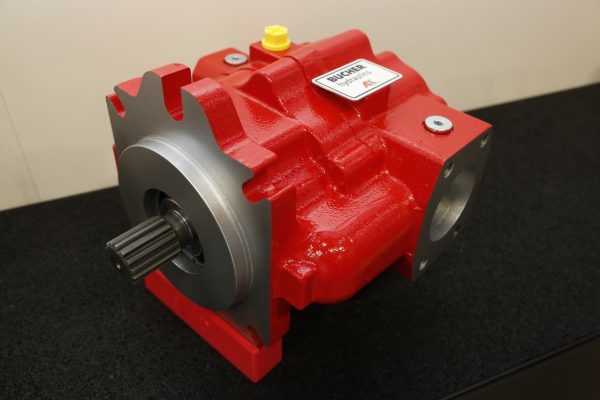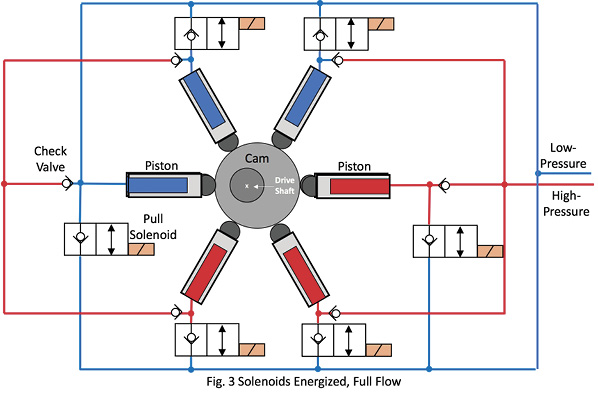Ergonomic Lifting Made Easier with Vacuum Technology
Apart from being backbreaking work, the lifting of heavy objects can so easily end in disaster. According to the laws of physics, the gravitational potential energy gained by lifting can convert to kinetic energy just to end in an almighty crash, buckling metal or shattering glass and potentially injuring anyone nearby. “Kissing it better” will not help, but the application of “the right suction and the right lips” prior to lifting can actually help avoid damage and injury.
Prevention Rather Than Cure
The term ergonomics derives from the Greek words for “work” and “natural laws.” Although ergonomics has probably been practiced throughout human history, the earliest strong evidence for its use dates back to ancient Greece, where toolmakers were well aware of the importance of a good fit between humans and their tools.
A simplified, modern definition could be: the study and design of equipment and devices to better suit the human body and its movements. At the heart of ergonomics rests the notion that prevention is better than cure. Avoiding industrial injuries, whether caused by accident or prolonged wear and tear, is a key objective.
New Tools Exceed Standards
Vacuum-based tools are widely used in industry to assist the ergonomic lifting of heavy objects, such as large sheets of glass for windows, doors, or vehicles. As it is important that the vacuum is maintained in such lifting tools or manipulators in case of unexpected power cuts, their sealing performance is strictly regulated by several international standards, for instance the ASME B30.20-2003 in the U.S. and EN 13155:2003 in the EU.
With a guaranteed maximum leak rate of 0.12 “Hg/minute against 3.0 in.3, the latest innovations in vacuum technology exceed the norms set in these standards, ensuring an even higher level of safety.

Non-Return Valves Maintain The Vacuum
In case of power or system failure, vacuum can be maintained using several different methods. The addition of vacuum tanks may seem like the simplest and most straightforward solution. However, to work properly, the tanks need to be very large, resulting in cumbersome and expensive installations.
A preferable alternative is to employ non-return valves or check valves that provide a robust seal if the vacuum pump suddenly fails. These can be either externally fitted or integrated into even the smallest of decentralized vacuum ejectors. Apart from a neater finish, the integrated solution used in the latest available technology will save space and is usually more cost effective.
Also, a decentralized vacuum system based on small ejectors integrated into each suction cup is inherently more secure than a centralized system relying on one large vacuum pump. In the decentralized system, failure or loss of vacuum in one cup or ejector will not affect or jeopardize the entire system.
Double-Lip Suction Cup Leaves No Marks
Newly developed, extra-large, flat suction cups are ideal for the handling of, for instance, large panes of glass with either flat or slightly concave surfaces. Available in diameters of 150-300 mm, the cups are equipped with a specially designed friction pattern that is tailor-made for vertical handling of glass or metal sheets. The friction pattern stops sheets from slipping, even if they are slightly wet or greasy.
A double-lip design acts as an extra safety barrier. If the cup’s outer lip is accidentally torn or cut, the inner lip will make sure that such damage does not have fatal consequences. It also safeguards against the effects of overloading.
Made in special-quality Nitrile-PVC rubber, the cups leave no visible marks on glass. The material is 100% mark-free to the same level as polyurethane 60° shore. The rubber part is molded to the aluminum fitting, providing a strong and reliable interface.
Increased Safety with Indicators and Dual Controls
Ergonomic design also involves features such as indicators and controls. It is important that operators of glass-handling manipulators, for example, can quickly and easily monitor if the system is operating at the correct vacuum level. Hence, individual suction cups need to be fitted with visual analogue gauges or conventional vacuum switches that clearly indicate incorrect levels. Audible warning signals may also need to be added to cover acute situations.
For optimal safety, a dual-command regime is used for the release mechanism to ensure that this is not accidentally triggered by the operator.

Low-Pressure Check Valve Ensures Proper Release
For accurate and safe operation, the release mechanism needs to respond quickly and efficiently. Blow-off check valves are used to prevent vacuum from being pulled back to other pneumatic valves of unknown sealing performance.
However, a common problem of traditional blow-off check valves is that they are slow to respond, not evacuating the vacuum quickly or uniformly enough to ensure a safe release. For example, if three out of four suction cups let go of a glass sheet but some vacuum remains in the fourth cup, the sheet could be left dangling precariously.
To eliminate such risks, new blow-off check valves responding to low opening pressure have been developed. This will ensure that all check valves in a system open fully during the release. This is particularly important when releasing sheets of glass.
The use of decentralized multi-stage vacuum ejectors based on COAX® technology will also speed up the response/evacuation time. Compared with alternative methods, these ejectors display a 50% shorter response time with the same energy consumption.
Save Between 90 and 99% of Energy
An extra energy-saving feature allows for the air consumption to be reduced by between 90 and 99%. With this function enabled, the extra sealed non-return valve will keep the pump in a zero air consumption mode during virtually the entire vacuum duty cycle, even if this lasts for as long as 15-20 minutes.
As illustrated above, the latest developments in vacuum technology offer the opportunity to capture the essence of ergonomics through building the optimal lifting system for the handling of, for instance, large sheets of glass. By using the right suction and the right lips for the job, you really can “kiss it better” before lifting, rather than after.







